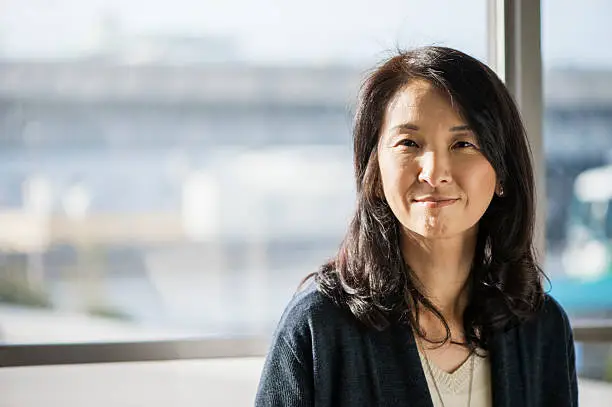Why do Japanese women choose to part ways after two decades of matrimony ? Beyond the surface of societal expectations and cultural norms lies a complex narrative of evolving aspirations, shifting dynamics, and the delicate dance between tradition and modernity. Join us on a journey as we solve the mystery and investigate the complex causes of why, after 20 years of marriage, some Japanese women find themselves at the fork in the road, deciding whether to continue or diverge.
Reasons
1. Cultural Expectations vs Personal Growth

Over the course of 20 years, as women evolve personally and professionally, they may find themselves at a crossroads between adhering to societal expectations and pursuing their own dreams.In essence, a tension that develops as a result of the conflict between cultural norms and personal desires over time may weaken the marriage. Some Japanese women make the difficult decision to file for divorce after 20 years of marriage because they want to put their own development ahead of following societal standards.
2. The Impact of Modernization
The newfound empowerment and independence that come with modernization can prompt a reassessment of life priorities. With greater exposure to global ideals, influenced by Western perspectives, Japanese women may question traditional values and societal expectations.

This clash of influences, where age-old norms collide with contemporary notions, can act as a catalyst for introspection. Modernization brings with it a sense of individualism and the pursuit of personal fulfillment, challenging the traditionally held belief in sacrificial roles for the sake of familial harmony.
The Impact of Modernization, therefore, becomes a double-edged sword—a force that empowers women to explore their identities beyond conventional roles but also introduces complexities and dilemmas into long-term marriages.
3. Intimacy and Emotional Disconnect
Maintaining intimacy in any marriage is a nuanced challenge, and in Japan, conservative values may hinder frank discussions about emotional and physical closeness. As couples navigate the complexities of life—raising children, managing careers, and adapting to societal expectations—the emotional connection that once served as the foundation of their union may fade
Without open communication and an acknowledgment of changing desires and expectations, spouses may find themselves growing apart emotionally, ultimately contributing to the decision to seek a divorce after two decades of marriage.
4. Parental Priorities
The phase of empty nesting, where children have grown and left home, becomes a pivotal moment in the lives of couples. After two decades of marriage, Japanese women often find themselves at a crossroads as the dynamics of their relationship shift. The focus that was once centered around parenting and raising children undergoes a profound transformation. With the departure of children, spouses may confront a void in their lives that was previously occupied by shared parental responsibilities.

For Japanese women who have dedicated the majority of their adult lives to nurturing and raising a family, the empty nest phase may prompt a reevaluation of personal fulfillment. The pursuit of individual goals and desires, which may have been set aside during the child-rearing years, becomes a focal point. The shift from a family-centric life to a more self-focused one can lead to introspection and, in some cases, the realization that the marriage no longer aligns with personal aspirations.
In essence, the departure of grown children becomes a catalyst for self-discovery and the redefinition of priorities. The empty nest phase, while liberating in many aspects, can also expose underlying issues in a marriage, ultimately contributing to the decision of some Japanese women to seek divorce after 20 years of matrimony.
CONCLUSION
In conclusion, the unraveling of marriages among Japanese women after two decades is a complex interplay of cultural expectations, communication breakdowns, economic pressures, generational shifts, and evolving personal dynamics. As we navigate through the intricacies of these factors, it becomes evident that sustaining a long-term marriage requires more than just adherence to tradition; it demands open communication, mutual understanding, and a willingness to adapt to the evolving needs of both partners.
The delicate balance between maintaining cultural integrity and embracing individual growth is a challenge faced by many couples. The impact of economic factors, generational clashes, and the evolving roles of women in modern Japan cannot be underestimated. It is in acknowledging these challenges and proactively addressing them that couples can find the resilience needed to weather the storms that often come after two decades of matrimony.
In essence, the journey of marriage is a dynamic and evolving one, reflective of the ever-changing landscape of societal norms and personal aspirations. Understanding the intricacies of why Japanese women choose to divorce after 20 years is not just an exploration of cultural phenomena; it’s a call to action for couples to engage in open conversations, foster emotional connections, and navigate the crossroads of life together. Only through such efforts can we hope to transform the enigma of divorce into an opportunity for growth, self-discovery, and, ultimately, a redefined understanding of enduring love.
How does Japanese culture influence long-term marriages?
Cultural expectations, communication styles, and the emphasis on conformity play significant roles in shaping the dynamics of long-term marriages in Japan.
What role do economic factors play in divorce after two decades?
Financial pressures and career sacrifices can contribute to the strains that lead to divorce after 20 years of marriage in Japan.
Can generational clashes really impact a marriage?
Yes, differing generational perspectives and the clash of values can create tension, affecting the longevity of a marriage.
How can couples navigate the challenges and sustain a long-term marriage?
Open communication, a willingness to adapt, and addressing evolving priorities are essential for couples to navigate the challenges and sustain a long-term marriage.

